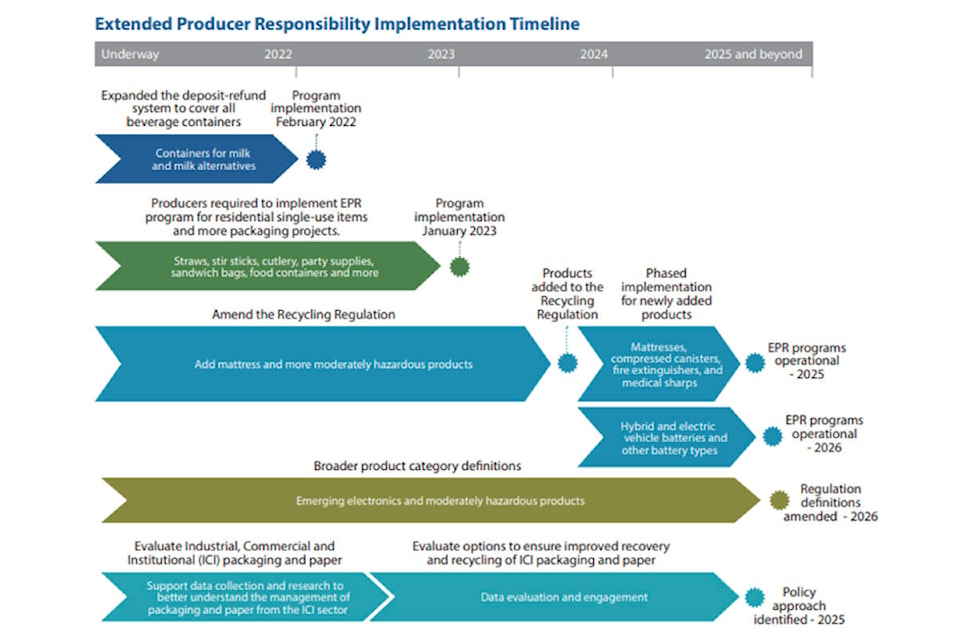Getting more materials like e-waste and mattresses out of the landfill is one of the aims of a new provincial plan putting more responsibility on producers.
The board for Comox Strathcona Waste Management got a chance to hear some of the details about the newly announced Five-Year Action Plan from the Ministry of the Environment and Climate Change Strategy at their latest meeting in October.
“This plan is the result of years of work at the hands of many municipal governments, Indigenous groups and a range of stakeholders,” said Jennifer Ivan, CSWM diversion and operations support coordinator.
During discussions, there was a demand for more options for “hard to handle” products and more scope for existing Extended Producer Responsibility programs.
Last September, the ministry released an intentions paper noting a goal of developing a multi-year strategy, which included input from the CSWM board. This resulted in the new plan, released this September. The goal is to divert more recyclable materials while saving more landfill space.
The plan notes what categories are to be added through 2025. This includes items such as canisters and fire extinguishers, hybrid and electric vehicle batteries, medical sharps and emerging electronic items. There is also a timeline to evaluate industrial, commercial and institutional packaging and paper for more recovery and recycling opportunities.
“This is the phone call I take weekly,” Ivan said.
RELATED STORY: Comox-Strathcona’s illegal dumping program showing progress
RELATED STORY: E-cigarettes, mattresses, lithium-ion batteries soon to be recyclable in B.C.
She also talked about the specific EPR plan for mattresses. Last year, she said the Comox Valley and Campbell River landfills received more than 7,200 mattresses. This included some received from remote sites.
“I took a look at the 2021 data, and it looks like we’re going to be headed toward similar numbers,” she said.
At $15 per mattress, the EPR expansion could eliminate about $110,000 that residents currently pay to dispose of these mattresses. The EPR will also facilitate more material to be recovered and recycled from mattresses as opposed to ending up in landfill. At present, the mattresses are pulled apart for the recovery of metals, but the EPR would mean recycling of “things like the foam and the fluff.”
She later clarified her numbers only referred to mattresses. If box springs were taken into account, the estimate would be higher, probably at least 20 to 30 per cent, Ivan said.
The EPR expansion of moderately hazardous products should mean savings for CSWM operations. These currently cost CSWM about $319,000 for safe disposal.
Board members were encouraged by the steps to put the onus on producers to take more waste management responsibility.
“It’s really encouraging to see greater responsibility financially by producers, to take care of the products they’re creating,” said Will Cole-Hamilton, one of the Courtenay city representatives.
Brenda Leigh, one of the Strathcona Regional District board members, asked about restrictions on glass recycling for items such as food containers. Ivan responded that Recycle BC depots, which are staffed, do accept it, though glass may not be accepted for curbside pickup or where it would be co-mingled with other material because it can present health and safety issues. She added the Oyster River depot in Leigh’s electoral area was not a staffed Recycle BC depot, though Leigh suggested they could at least provide some signs to help inform the public.
mike.chouinard@comoxvalleyrecord.com
Like us on Facebook and follow us on Twitter.
